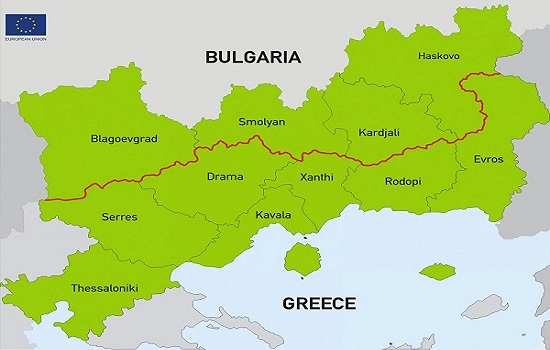The Cooperation Programme INTERREG V-A “Greece-Bulgaria 2014-2020” was approved by the European Commission on 09/09/2015 by Decision C(2015) 628. It aims to increase entrepreneurial activity in the eligible area and to improve SME capacity to expand beyond local markets. Furthermore, the programme will improve cross-border cooperation in flood risk management and will develop and promote the border area's cultural and natural heritage for tourist purposes. Additionally, the foreseen actions will lead to better joint surface and groundwater management systems and will improve cross-border accessibility leading to reduced travel times for people and goods as well as improved traffic safety. Finally, the programme aims to expand social entrepreneurship in the border area leading to increased employment in social enterprises and increased delivery of social services to communities with poor socio-economic indicators.
- Budget
The total budget (ERDF and national contribution) for the European Territorial Cooperation Programme “Greece-Bulgaria 2014-2020” is €130,262,835.00. The total financing consists of €110.723.409,75 (85%) ERDF funding and €19.539.425,25 (15%) national contribution.
- Eligible area
The eligible area of the Programme consists of the Region of Eastern Macedonia-Thrace (Regional Units of Evros, Kavala, Xanthi, Rodopi and Drama) and the Region of Central Macedonia (Regional Units of Thessaloniki and Serres) in Greece and the South-Central Planning Region and South-West Planning Region (Districts of Blagoevgrad, Smolyan, Kardjali and Haskovo) in Bulgaria.

It extends to 40.202 km2 and has a total population of 2.7 million inhabitants. It covers four territorial units at NUTS II level (Regions), and 11 territorial units at NUTS III level (Districts). The eligible area extends across the entire Greek-Bulgarian border and is neighboring with Turkey (east) and FYROM (west), both countries aspiring to access to the EU. It is part of the most south-eastern non-insular area of EU, and it is situated between three seas: the Black Sea, the Mediterranean Sea and the Ionian-Adriatic Sea. Finally, it sits at the crossroad of strategic fossil fuel pipelines supplying the EU market and TEN transport axes.
The settlement structure of the area is characterized by the presence of 10 medium-large cities (>50.000 inhabitants) which accumulate 38,2% of total population, and 25 small cities (10.000-50.000 inhabitants). Despite the historically relatively small amounts of funds allocated, there is a long history of cooperation in the eligible area, which started with Community initiative INTERREG I (1989-1993).








